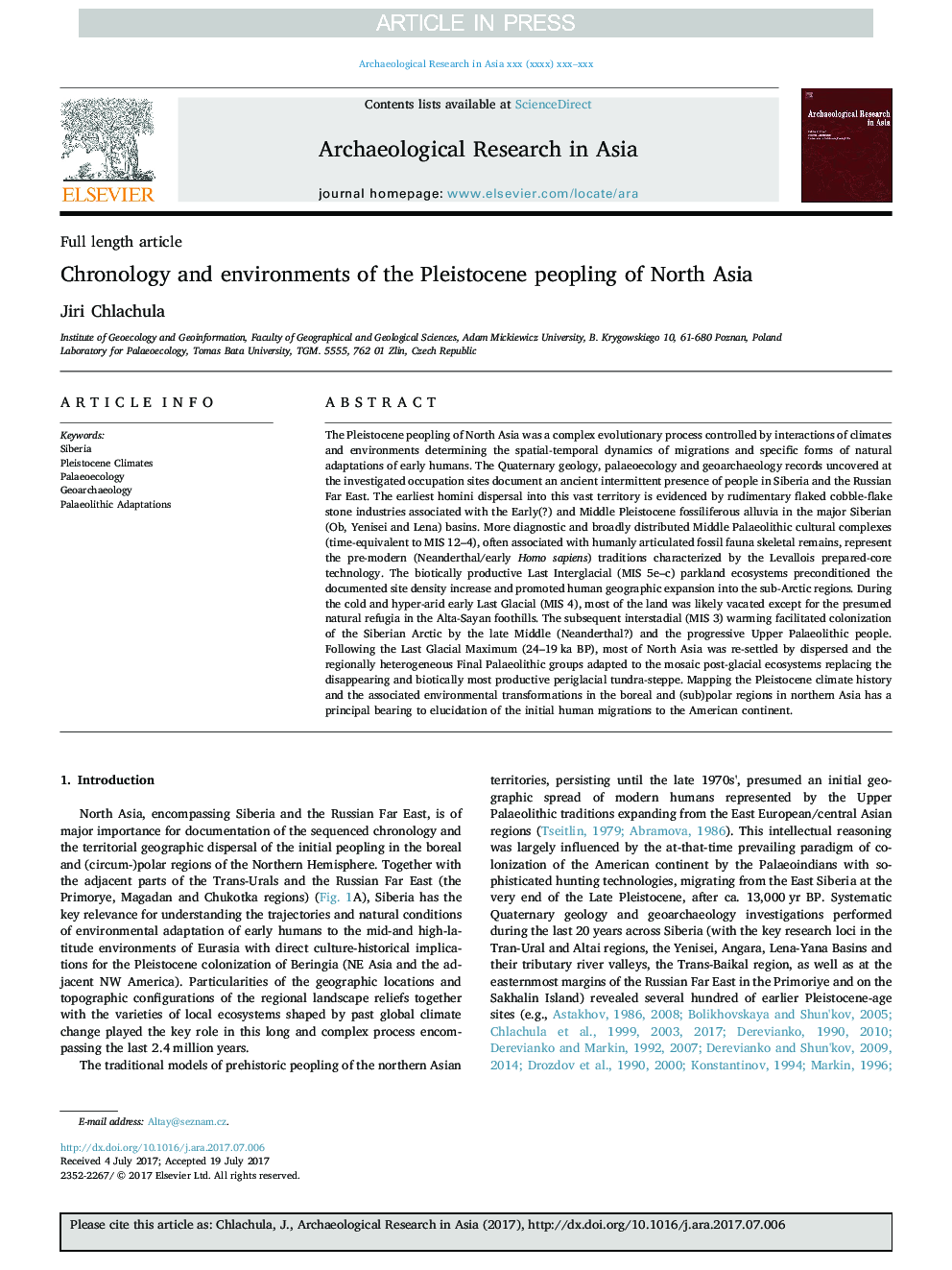| کد مقاله | کد نشریه | سال انتشار | مقاله انگلیسی | نسخه تمام متن |
|---|---|---|---|---|
| 7440278 | 1483760 | 2017 | 21 صفحه PDF | دانلود رایگان |
عنوان انگلیسی مقاله ISI
Chronology and environments of the Pleistocene peopling of North Asia
ترجمه فارسی عنوان
زمان سنجی و محیط های تولید مثل پلاتوستن شمال آسیا
دانلود مقاله + سفارش ترجمه
دانلود مقاله ISI انگلیسی
رایگان برای ایرانیان
کلمات کلیدی
سیبری، آب و هوای پلیستوتن، پالایئوکولوژی، جغرافیا شناسی، اقتباسهای پائئولیت،
موضوعات مرتبط
علوم انسانی و اجتماعی
علوم انسانی و هنر
تاریخ
چکیده انگلیسی
The Pleistocene peopling of North Asia was a complex evolutionary process controlled by interactions of climates and environments determining the spatial-temporal dynamics of migrations and specific forms of natural adaptations of early humans. The Quaternary geology, palaeoecology and geoarchaeology records uncovered at the investigated occupation sites document an ancient intermittent presence of people in Siberia and the Russian Far East. The earliest homini dispersal into this vast territory is evidenced by rudimentary flaked cobble-flake stone industries associated with the Early(?) and Middle Pleistocene fossiliferous alluvia in the major Siberian (Ob, Yenisei and Lena) basins. More diagnostic and broadly distributed Middle Palaeolithic cultural complexes (time-equivalent to MIS 12-4), often associated with humanly articulated fossil fauna skeletal remains, represent the pre-modern (Neanderthal/early Homo sapiens) traditions characterized by the Levallois prepared-core technology. The biotically productive Last Interglacial (MIS 5e-c) parkland ecosystems preconditioned the documented site density increase and promoted human geographic expansion into the sub-Arctic regions. During the cold and hyper-arid early Last Glacial (MIS 4), most of the land was likely vacated except for the presumed natural refugia in the Alta-Sayan foothills. The subsequent interstadial (MIS 3) warming facilitated colonization of the Siberian Arctic by the late Middle (Neanderthal?) and the progressive Upper Palaeolithic people. Following the Last Glacial Maximum (24-19Â ka BP), most of North Asia was re-settled by dispersed and the regionally heterogeneous Final Palaeolithic groups adapted to the mosaic post-glacial ecosystems replacing the disappearing and biotically most productive periglacial tundra-steppe. Mapping the Pleistocene climate history and the associated environmental transformations in the boreal and (sub)polar regions in northern Asia has a principal bearing to elucidation of the initial human migrations to the American continent.
ناشر
Database: Elsevier - ScienceDirect (ساینس دایرکت)
Journal: Archaeological Research in Asia - Volume 12, December 2017, Pages 33-53
Journal: Archaeological Research in Asia - Volume 12, December 2017, Pages 33-53
نویسندگان
Jiri Chlachula,
